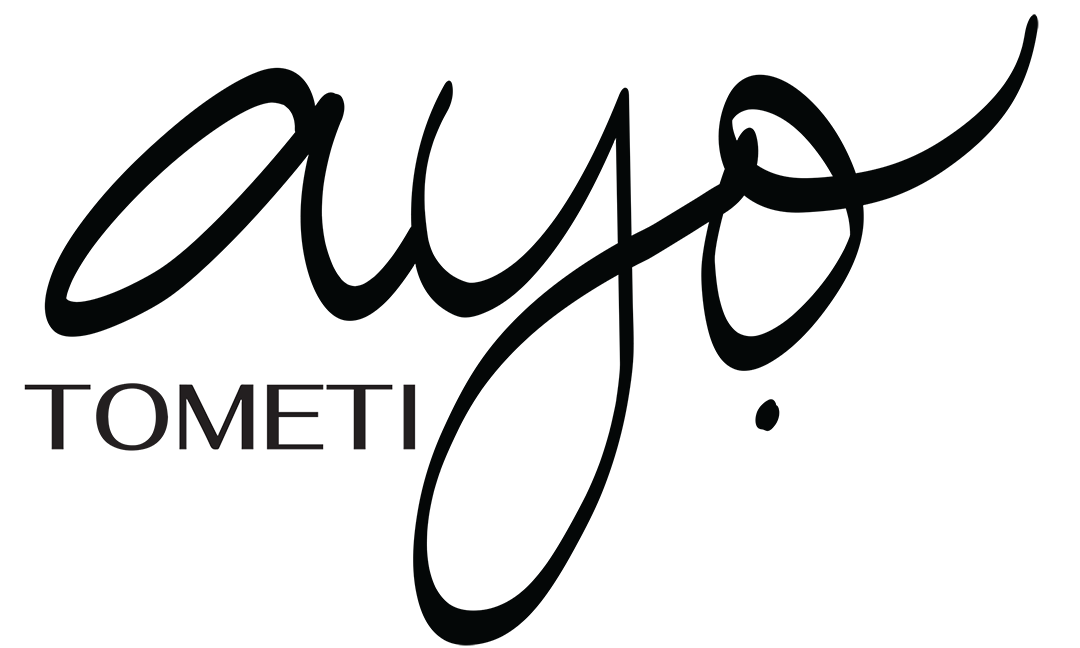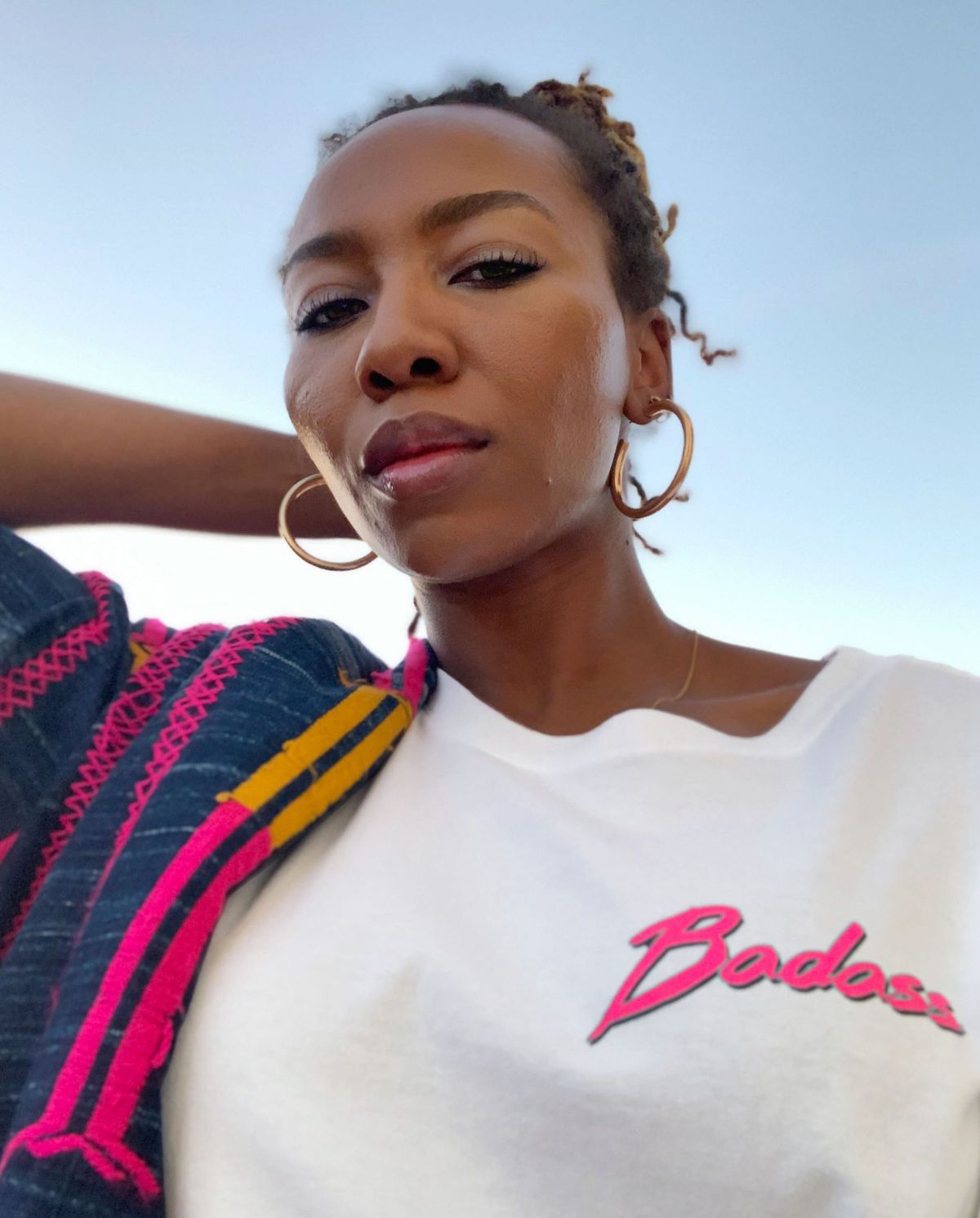Originally posted on InStyle (July 08, 2020)
Written by: Laura Brown
Amid ongoing global protests and the creation of Black Lives Matter Plaza in Washington, D.C., Tometi is feeling “vindicated” — and more badass than ever before.
When Opal Tometi woke up in her hometown of Phoenix on June 5, her phone was buzzing. After almost two weeks of global protests following the brutal death of George Floyd, Washington, D.C.’s mayor Muriel Bowser had renamed a section of 16th Street (in glaring proximity to the White House) Black Lives Matter Plaza. The words “Black Lives Matter” were painted on it in 35-foot-tall yellow letters.
Yellow, funnily enough, is Tometi’s favorite color. “I like yellow,” she explains. “It’s a color of joy.” When Tometi, along with co-founders Alicia Garza and Patrisse Cullors, launched the Black Lives Matter movement in 2013 in response to the death of Trayvon Martin, she designed the BLM website and social-media platforms using yellow and black.
But the morning of June 5 took Tometi completely by surprise. “I felt vindicated,” she says. “We had more support than we’d seen in previous years. There was overwhelming consensus that supporters of BLM are on the right side of history. Of course, we knew that, but international attention made local leaders step up in a different way. And to be honest, it’s complicated because D.C. BLM members have been demanding that Mayor Bowser take action on different cases, to no avail.” She adds, “Historically, people have been confused about the effectiveness of protest. But as I told NPR, there’s nothing like people taking their grievances to the streets.”
I first met Tometi in 2018 at a Badass Women dinner in Los Angeles. She is driven, effective, funny, and wildly charismatic (she also wears the hell out of a Badass T-shirt, as seen above). We’ve been friends ever since. After the Black Lives Matter Plaza appeared, I called her. “This is what I’ve longed for since I was 12,” she said.
Of course, if the world were right, Black Lives Matter wouldn’t exist and 12-year-old Opal would have had a different path. But Tometi, who was the only student to rock an Afro at her Arizona high school, grew up to change the world. To call her a badass seems an understatement given recent events, but she meets her own definition: “A woman who is standing in her power. A woman who is willing to step out when she is the only one. Being a badass is being part of the vanguard, following your distinct path and not shying away from that call.”
As history is showing us, Tometi is not the only one. “You may think you’re alone, and you quickly discover you’re not,” she says. “Our little trio may have started Black Lives Matter, but clearly we were not the only ones to believe in it.”
For more history you can believe in, my whole conversation with Opal Tometi follows.
Laura Brown: How did you feel when you woke up to the news of the Black Lives Matter plaza in Washington, D.C?
Opal Tometi: I felt vindicated. I felt as though we had a lot more support than in previous years. There was an overwhelming consensus that we are on the right side of the history. The international attention warranted local leaders, mayors and elected officials, to step up. There are more leaders that recognize they cannot sit on the sidelines. They have to use every tool in their toolbox to join us and demonstrate that they support this movement. They have the power to be able to make real changes. Historically, people have been confused about the effectiveness of protest. But as I told NPR, there’s nothing like people taking their grievances to the streets. As for the big Black Lives Matter mural juxtaposed to the White House and Donald Trump, it was really moving to me. It signaled that we are finally seeing the tide begin to turn.
OT: It was a complete surprise.
LB: Tell me what 12-year-old Opal was like.
OT: I was a very happy-go-lucky kid with a diverse crew of friends living in mainly white suburban Phoenix, Arizona. I experienced a little teasing, or the occasional racial slur being yelled at me while walking down the street, but I didn’t really absorb those messages. My family was so tight-knit, and the Nigerian immigrant culture that I grew up with played a huge role in that. I had a thick sense of belonging and felt a sense of right and wrong. But I remember wishing that I wouldn’t be teased because of my skin color. At that age I was just beginning to learn the history of Civil Rights heroes like Martin Luther King and Rosa Parks, and they were being spoken about as though their jobs were done and racism was over. I just knew something was a little off [laughs].
LB: I can’t put my finger on it!
LB: Cut to 2013 and the day you launched Black Lives Matter.
OT: I had heard about the murder of Trayvon Martin and the court case of George Zimmermann, and it really felt as though Trayvon was on trial for his own murder. That broke my heart. A 17-year-old boy on trial for his own murder, after being stalked and killed. At the time, my baby brother was 14 years old, and I remember thinking that this is going to be a defining story for his generation. I didn’t want that for him.
Between that feeling, recognizing what was happening on the news, and seeing the court case unfold, I was particularly raw and sensitive to what was going on. I’d just watched the film Fruitvale Station with my friend who’s also a Black community organizer when we got the news from texts and tweets. We were shocked and saddened. When I got home, I cried harder than I had in many years, then I went online to see what I could do. I saw Alicia’s [co-founder of Black Lives Matter] Facebook post and reached out to her and said we need to make this something real and I want to partner with you. I didn’t know Patrisse [co-founder of Black Lives Matter] at the time, but we of course got to meet. They had had a similar conversation, too. I was already doing work in the Black communities across the country, so I knew the people were already calling for change. The time was right. So I purchased the domain name, built a website using Tumblr, and signed us up on some social media. Within a couple of days, I invited other Black organizers from across the country to share their work using the hashtag and blogging with us.
LB: What did your mom say when you launched Black Lives Matter?
OT: She is such a remarkable woman. She has always been supportive of me. She has never said a bad thing about how I look, what my choices are, my weight or my hair. A lot of people grow up with a lot of hang ups, particularly in the Black community and the Nigerian community. There is a lot of judgment in how you should look or having straight hair. She has always known I have been a little quirky. I was kind of an activist as a young girl. I wore my hair in an Afro. Nobody else was doing that in Arizona.
LB: You had an Afro in Arizona?!
OT: Oh, yes. My mom is rather outspoken herself too. She is not necessarily an advocate out on the street, but she will speak out in our community if something is not right. So when I started Black Lives Matter, she wasn’t quick to jump on it. She is concerned at times for my safety and security. We do get threats and letters and coocoo locos who are doing the most [laughs].
LB: Or the least. What do you think makes a woman a badass?
OT: A woman who is standing in her power. A woman who takes ownership of her thoughts, her life, and of her future. People who are willing to step out when they are the only one, or at least think they are the only one. To me, being a badass is being part of the vanguard and not shying away from that call. One reason for taking Black Lives Matter to social media is that we need more people. Some of the traditional media wasn’t keen on picking up issues about anti-Black racism. There was this thought that we were post-racial: We have Obama, we have Oprah, we have all of those people, so we are fine! My big mantra is we want to be effective and get things done. It may not be perfect, but let’s get it done.
LB: What are you ambitious to do now?
OT: My hope is to work more with the international community and move on the global stage. There are a lot of human rights issue around the world. And issues like racism and poverty are not unique to the U.S. People around the world are looking to us for partnerships and for real solidarity. I want to ensure that what we have started doesn’t end here, and that people around the world also have the support that they deserve. The movement is borderless.
LB: You are just going to fix up the whole world, no bigs.
OT: Oh, it’s no biggie.





